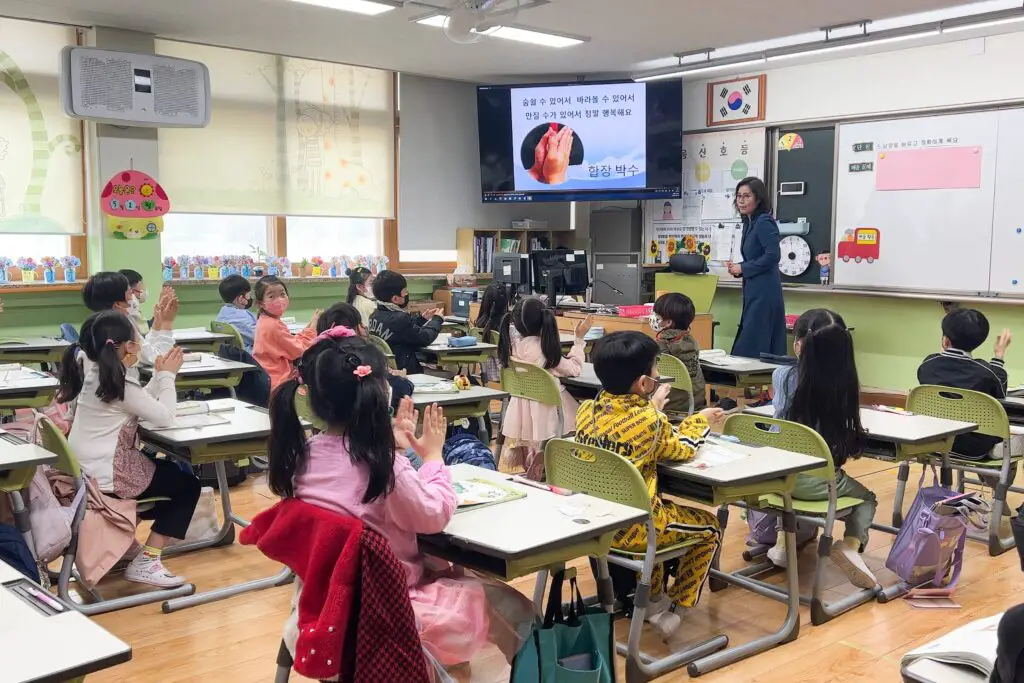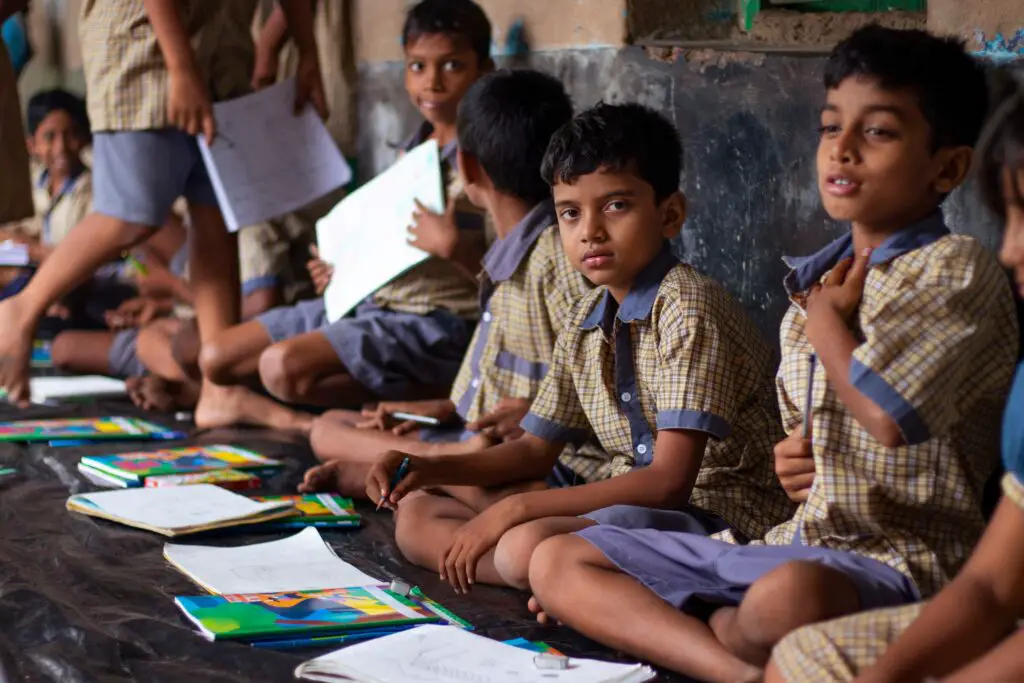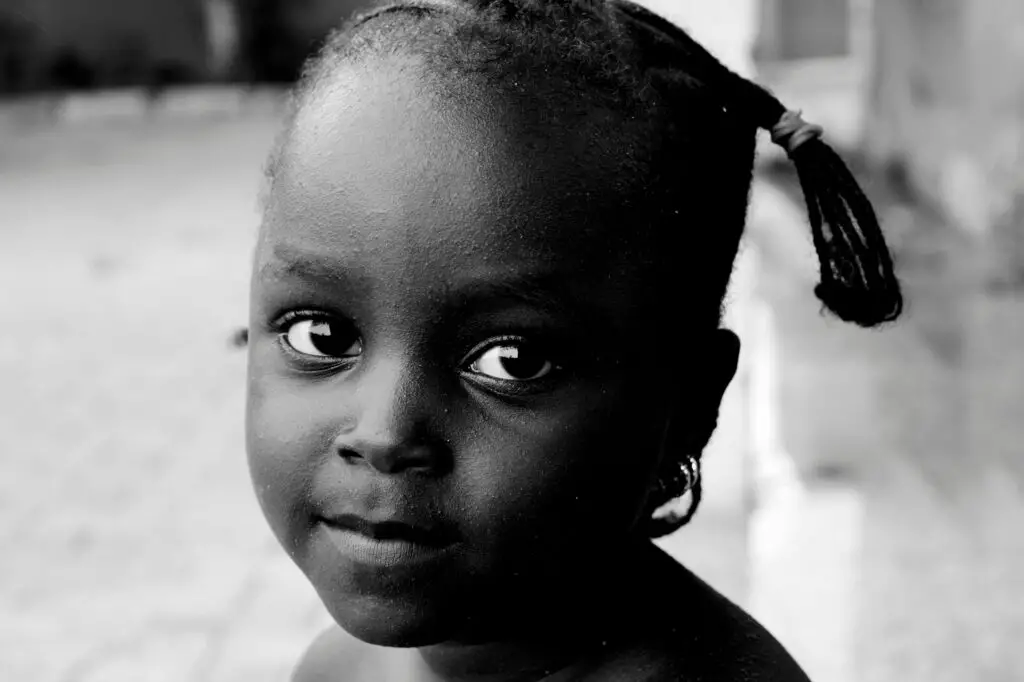1. No Red Ink Allowed – Australia

In some Australian schools, teachers aren’t allowed to mark in red ink. The reason? It’s considered too harsh and stressful for students. Instead, they might use purple, green, or even pink pens to correct work. The idea is that softer colors feel more supportive and less intimidating. It’s meant to encourage a more positive learning experience rather than make kids feel like they’ve failed shares Fast Company.
While it might sound strange, there’s a psychology behind it. Red has been linked with danger and negativity, so some educators believe it sends the wrong message. Critics argue it’s coddling students too much, but schools defending the rule say it’s about boosting confidence, not lowering standards adds Business Standard.
2. Haircut Inspections – Japan

In Japan, some schools still conduct regular haircut inspections. Students are expected to maintain very specific hairstyles, and anything outside the guidelines can get them into trouble. For boys, hair must be short and neat, and girls often have to wear their hair in low ponytails or leave it down. Bangs can’t go past the eyebrows in many cases shares the Straits Times.
These strict grooming rules are rooted in the belief that discipline leads to better learning. But many students feel it stifles their individuality. In recent years, there’s been pushback from both students and parents who say the rules are outdated. Still, in plenty of schools, you can get sent home for a “rebellious” haircut.
3. No White Socks – South Korea

Wearing white socks might seem harmless, but not in certain South Korean schools. Some institutions have rules requiring students to wear only black or dark-colored socks. White is considered too casual or even distracting in a classroom setting adds Reddit.
These dress codes are taken seriously, and students can actually get reprimanded for breaking them. It’s part of a broader effort to maintain order and unity. Uniforms are already standard, so accessories like socks are just one more part of the equation. While outsiders might find it extreme, it’s seen as a way to reinforce discipline.
4. Smile Breaks – India

In some Indian schools, teachers are required to stop class periodically and have students smile. The idea is to reduce stress and create a more joyful learning environment. These “smile breaks” might seem odd, but they’re rooted in the belief that a happy student is a better learner.
During the break, students might stretch, do breathing exercises, or just share jokes with classmates. It’s kind of like a mini-reset for the brain. Though not widespread, schools that practice this say it improves focus and mood. And honestly, a moment to just breathe and smile doesn’t sound like a bad idea.
5. No Chewing Gum—Ever – Singapore

Singapore is known for its strict laws, and that extends to the classroom too. Chewing gum is completely banned—not just in schools, but throughout the entire country. So naturally, students can’t bring it to school, let alone chew it during class.
The ban was implemented to keep public spaces clean, and schools follow suit. Even accidentally bringing gum can lead to scolding or punishment. It might seem excessive, but Singaporean schools are all about cleanliness and discipline. And in this case, the rule isn’t made up—it’s actually law.
6. Outdoor Classes in Freezing Weather – Russia

In some parts of Russia, young students are expected to play or study outside unless the temperature drops below -13°F (-25°C). You read that right. Unless it’s dangerously cold, kids bundle up and head outdoors. It’s all part of a belief that fresh air builds strength and resilience.
While it sounds extreme, especially to those of us used to indoor recess at the slightest chill, it’s a long-standing tradition. Some schools even have outdoor nap time for preschoolers. Parents and teachers swear it keeps kids healthy and boosts their immune systems. It’s hard to imagine, but for many Russian students, snow pants are just part of the uniform.
7. Forbidden Valentine’s Day – Saudi Arabia

In Saudi Arabia, students can’t celebrate Valentine’s Day in school. In fact, any form of the holiday—cards, flowers, hearts, or red clothing—is completely banned. The country considers it a Western and non-Islamic tradition, and public schools strictly enforce the rule.
Teachers are told to confiscate any Valentine’s items they see. Some students have even been suspended for trying to hand out candy or wear red. It might sound wild, especially if you’re used to making Valentine boxes in class, but the ban is very real. In recent years, enforcement has eased slightly, but schools still take it seriously.
8. Banned from Using the Left Hand – Some Parts of Africa

In certain African countries, including Ghana and Tanzania, students are discouraged—or outright forbidden—from writing with their left hand. Using the left is seen as disrespectful or unclean in some cultural contexts. As a result, teachers may forcibly train kids to use their right hands, even if they’re naturally left-handed.
This rule shocks a lot of people from countries where handedness is personal and accepted. But in these schools, tradition often overrides preference. Some children have been punished or embarrassed for using their left. Though the practice is slowly fading, it still exists in some communities today.
9. No Toilet Paper – Some Public Schools in Mexico

In many public schools in Mexico, students must bring their own toilet paper from home. The schools don’t provide it due to budget constraints. So it’s not unusual to see kids carrying a small roll in their backpack or even in their pocket.
Forget it one day and, well, good luck. Some schools have taken steps to provide basic supplies, but it’s not consistent. While this might seem unbelievable, it’s a reality for many students across the country. Families often have to chip in for supplies that other countries take for granted.
10. Shoes Off at the Door – Finland

In Finland, students take their shoes off before entering the classroom. It’s not just a quirky tradition—it’s meant to keep floors clean and create a homier environment. Kids either wear socks or indoor slippers during the day.
It’s part of a larger philosophy that school should feel safe and welcoming, not stiff or formal. Plus, it helps during the long winters when snow and mud are everywhere. Teachers say it makes a difference in how kids behave and feel. And considering how well Finnish schools perform, maybe there’s something to it.
11. Report Card for Parents – China

In some Chinese schools, it’s not just students who get graded—parents do too. Teachers evaluate things like how involved parents are, whether they help with homework, and how often they communicate with the school. They then send out “parent report cards” to let families know how they’re doing.
It’s designed to encourage parental involvement, which is seen as critical to a child’s success. Some parents take it seriously and work to improve their grades. Others find it stressful or invasive. Either way, the rule exists, and in some schools, it’s part of regular academic tracking.
12. No First Names for Teachers – Germany

In Germany, it’s considered deeply disrespectful to call a teacher by their first name. Students are required to use formal titles like “Herr” or “Frau” followed by the last name. Even outside of school, that formality sticks around.
Calling a teacher “Anna” instead of “Frau Müller” would be a major breach of etiquette. The tradition stems from a cultural emphasis on respect and boundaries between students and authority figures. It might feel stiff to outsiders, but in Germany, it’s completely normal. Many teachers prefer it that way, and students grow up understanding the importance of the title.
